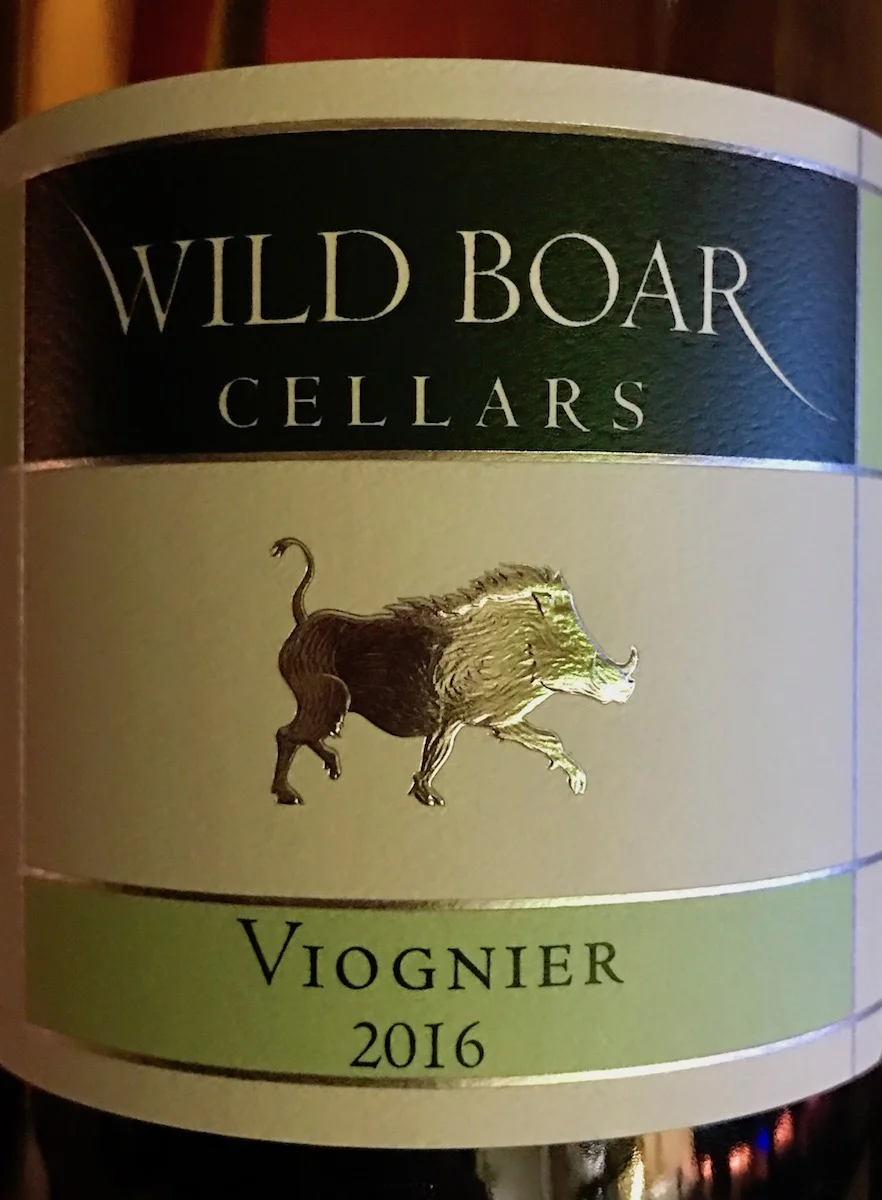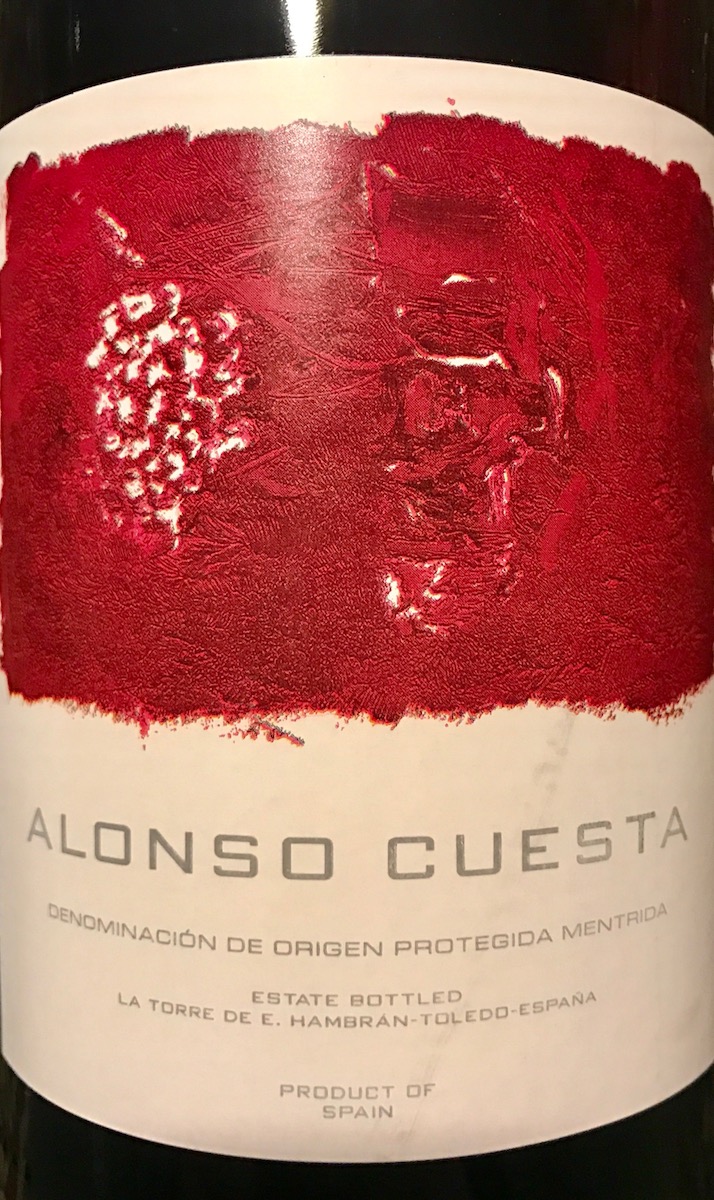Casual wine drinkers, aficionados, and beginners alike: Each month we expose you to new things, educating and diversifying your palate with a lineup of our monthly wine picks. We're sharing some of the best we've tried in the last month so that you can seek them out and bring them to dinner this month. As we focus a bit more on education and exposure to new things, we're also straying a bit off the beaten path with wine from some unique regions. Enjoy!
2016 Wild Boar Cellars Viognier (Virginia, USA)
Why we chose it: Wild Boar is the non-estate (i.e. grapes are not grown by the winery itself) label for the still-young, but already successful and clearly capable Stone Tower Winery in Virginia's Loudon County. Produced from grapes grown in Orange County, VA, this bottle is a lovely example of the Viognier varietal that performs so well in the Commonwealth (as the state is known). Crisp refreshing fruit dominates the experience, with marked banana and pear on the palate. This is a super versatile white, with a little acidity and viscosity that pairs well with food. Some texture of a sweeter white without the sugar, we also think it will be a crowd pleaser that can appeal to a range of drinkers' preferences.
What to look for: The best Virginia wines are made in more of an Old World style... so expect the Viognier you find here to be rather different than Viogniers from elsewhere in the United States. That said, we think that some of the world's best Viognier is made here, so seek out a bottle from Virginia if you can (easier said than done, we know).
2011 Fowles Wine "Are you Game?" Sauvignon Blanc (Strathbogie Ranges, Australia)
Why we chose it: We met Matt and Luise Fowles several years ago when they shared Ladies who Shoot their Lunch and Are you Game? wines at a small food and wine pairing dinner. A conscious desire to produce food wines -- specifically those that pair well with the likes of wild game and the fish you've caught -- drives the wine making ethos here. We've paired their Ladies Shiraz with West Virginia venison, and love their whites with all manner of seafood. They recommend drinking the Are you Game Sauvignon Blanc with trout (the state fish of West Virginia, to re-establish that coincidental connection) for a pairing we can certainly get behind. As for the wine itself… we opened this up to a big expressive nose that throws banana and vanilla cake notes. The mouthfeel is fuller and rounder than stereotypical Sauvignon Blanc, with a little bite in the front followed by great citrus and a lemon zest quality throughout. There is, interestingly, a tiny bit of slate and petrol that reminded us more of a Riesling than a Sauv Blanc. This wine is really lively, and certainly fun to pair with fish.
What to look for: We've loved Fowles Wine for several years, and really need to write more about their great wine specifically, and of Australian wine more broadly. Are you game is somewhat unique in its style and what the winemakers have set out to make, but if you're wineshop can't find you something from Fowles, we'd ask them to find you an Australian Sauvignon Blanc that's light on grassy notes. See what they come up with.
2013 Aviary Merlot Blend (Napa, California, USA)
Why we chose it: A component of a three-glass flight at the Vino Volo wine bar in the international Terminal E at Boston Logan airport, we came to really enjoy what thought at first was to be an overly alcoholic feeling bottle. Nonsense. Pipe smoke, vanilla, and boysenberry in the nose mellows into something smooth and velvety. Notes of tea and warming spices make me feel like I'm walking through a spice shop, with different notes asserting themselves at every turn. It runs hot, but proved to be quite an enjoyable California red blend.
What to look for: This is our easy bottle for the month (and, admittedly, not off the beaten path). Merlot. Blend. From Napa. That's what you're looking for, here. Can't guarantee that you'll get a spice box, but it's hard to go wrong unless you're trolling the bottom of the barrel (or wine rack) prices. That's important. Don't. Buy. Cheap. Merlot. Merlot is a wonderful varietal when made with care, but can get really mass produced and really unpleasant really quickly if you're not discerning about what you're buying and the price point you're looking at.
2012 Morandé Carménère Reserva (Maipo Valley, Chile)
Why we chose it: Continuing with our wine flight from Vino Volo in Boston... What an interesting bottle! The nose is powerfully characterized by cut green peppers, cigar smoke, and pencil shavings. Rich and sophisticated in a rugged way, the potent nose gives way to really juicy cherry and black fruits on the palate. This is a wine not to be trifled with, but one whose nuanced flavor profile sets it apart from a crowded field midrange Chilean reds. We'd recommend this bottle for anyone seeking to get away from the ordinary.
What to look for: Carménère originally hailed from France, though you'll find little or none of it there today. Very similar to Cabernet Sauvignon, though less "big", this is a grape varietal that needs to be on your list. Go to Chile (figuratively, in your wine shop, of course) -- the biggest Carménère producing nation -- to find some. Buy a few bottles to experiment with its nuances. Anything that can throw green pepper and pencil shaving notes from the same glass is worth your time.
2012 Bodegas Alonso Cuesta (Méntrida, Spain)
Why we chose it: We recently visited Spain's Méntrida wine region, and spent time sipping wine pulled straight from the barrels at Bodegas Alonso Cuesta. This particular bottle is a blend of Garnacha (the region's signature grape), Cabernet Sauvignon, and Petit Verdot blended in both French and American oak. We learned from tasting in the barrel cellar that, in this Garnacha, the French tends to impart notes of tobacco and baking spice while the American tends to impart more of a playground medley of candy, pepper, big fruit, licorice, etc. Pouring from the bottle, we discovered a nose that began as red fruit and then quickly transformed into a brilliant blend of baking spice, clove, all spice, a touch of cinnamon, and sugar plum candle. The Petit Verdot asserts itself in the palate, offering acidity and tannin that make the wine a hearty food companion that marches on with its red fruit and, dare we say, a little touch of licorice.
What to look for: Méntrida wine is going to be inherently difficult to find in a lot of places, but we're here to tell you that this imports to the United States (and elsewhere, for we hear that the Chinese market has really taken an interest in Méntrida). While we can always get behind reds from most of Spain's wine regions, we're recommending this bottle specifically because we want you to try Méntrida wines. You can get started with our quick primer on the region.




